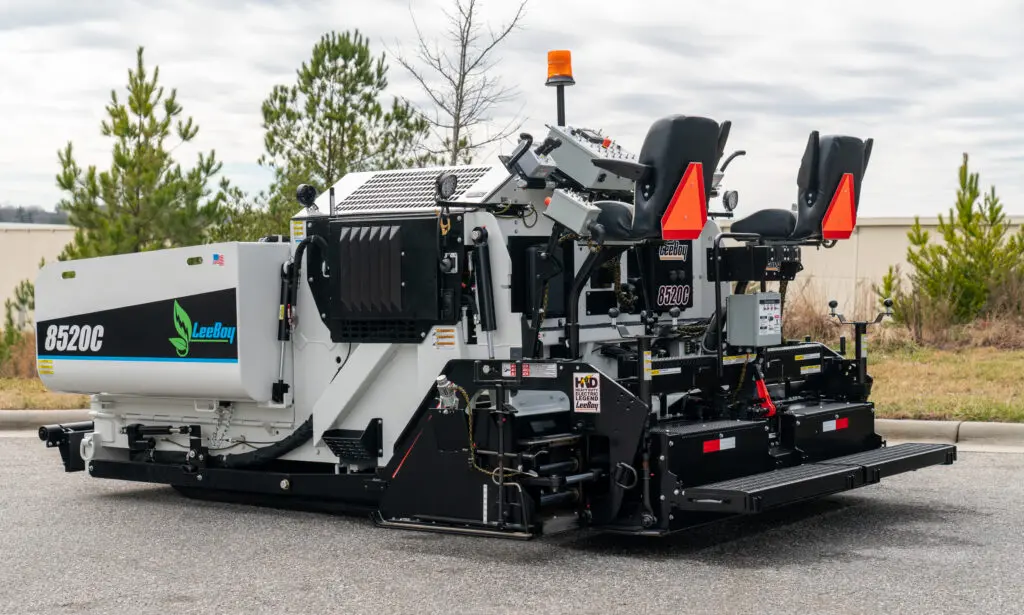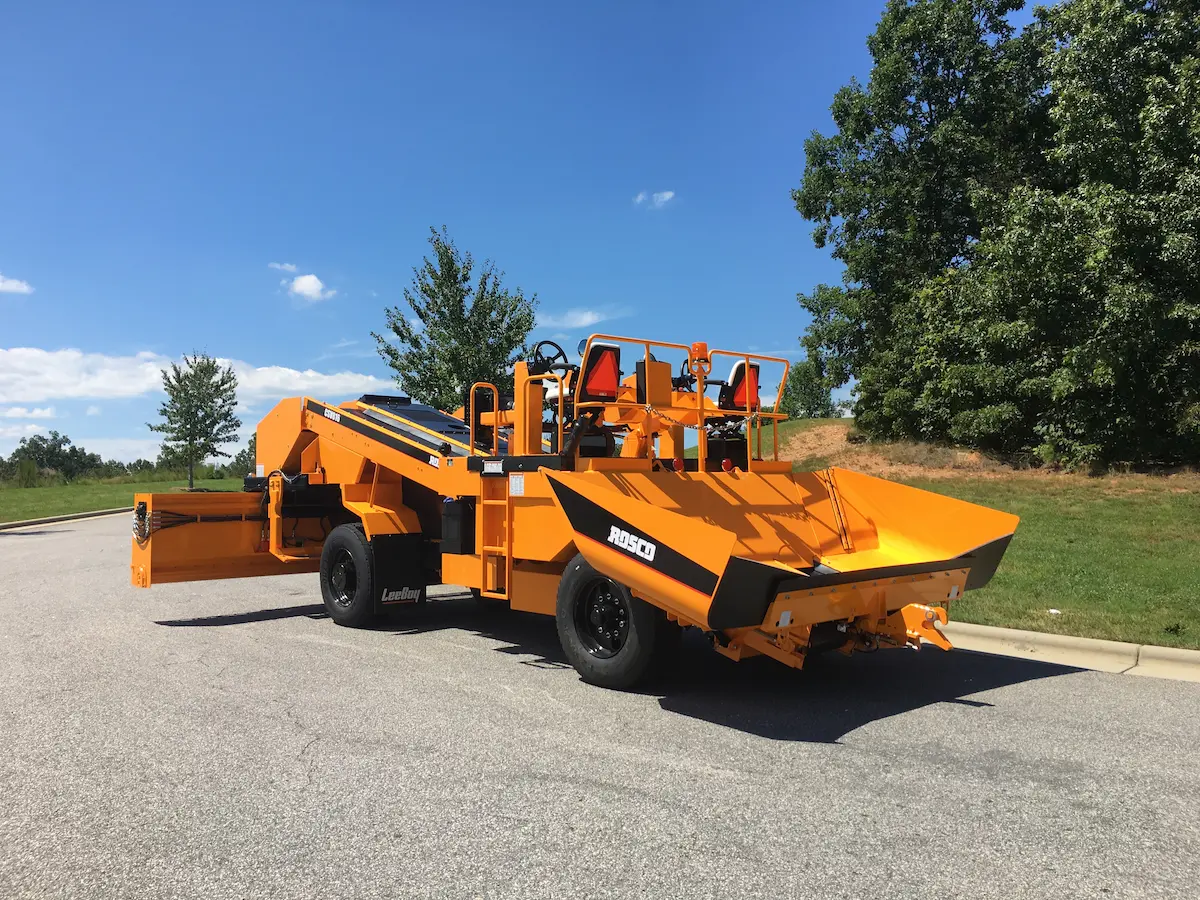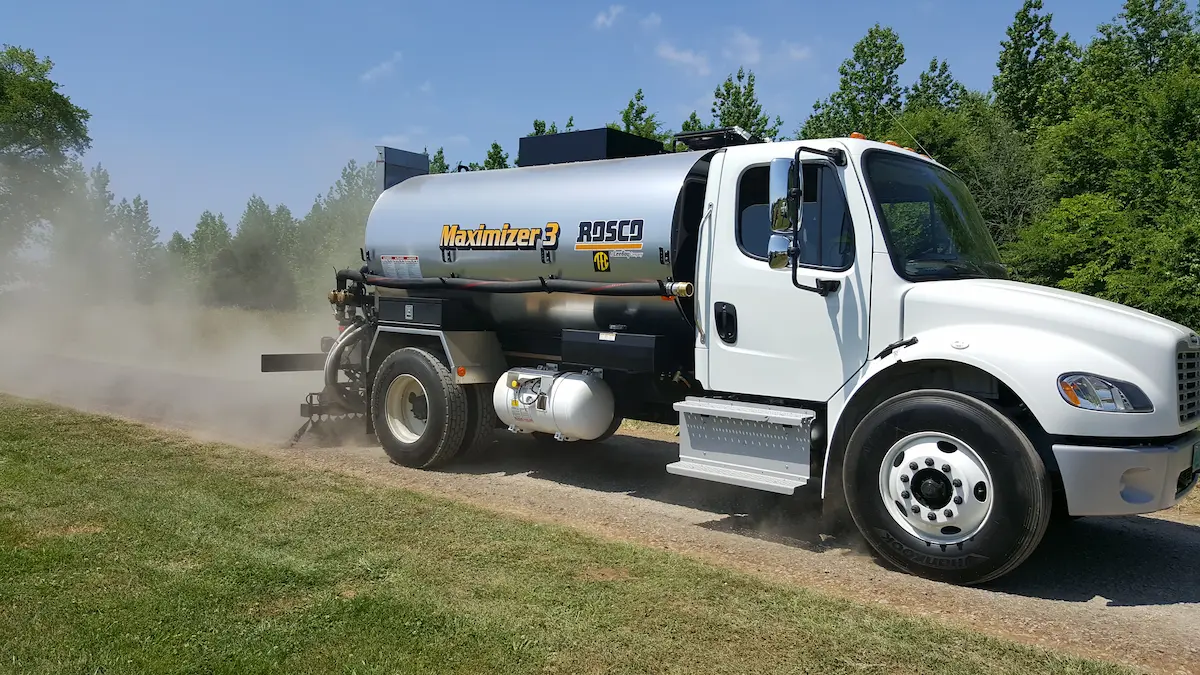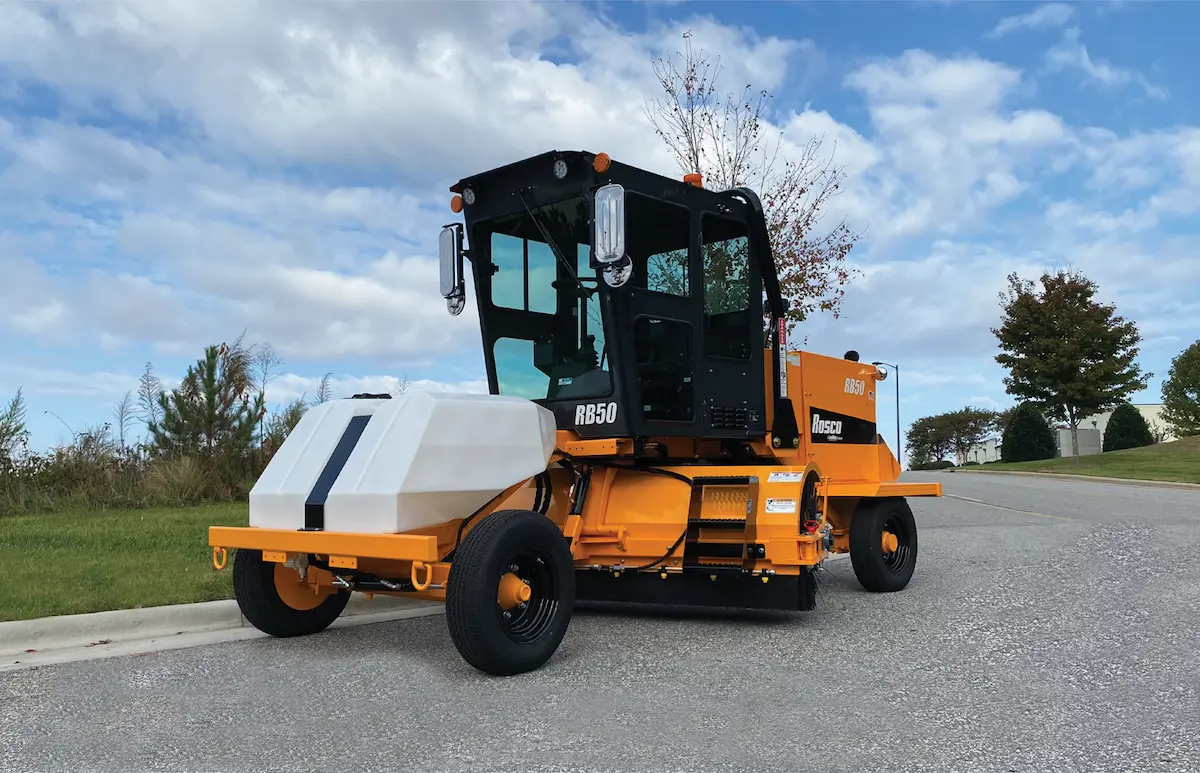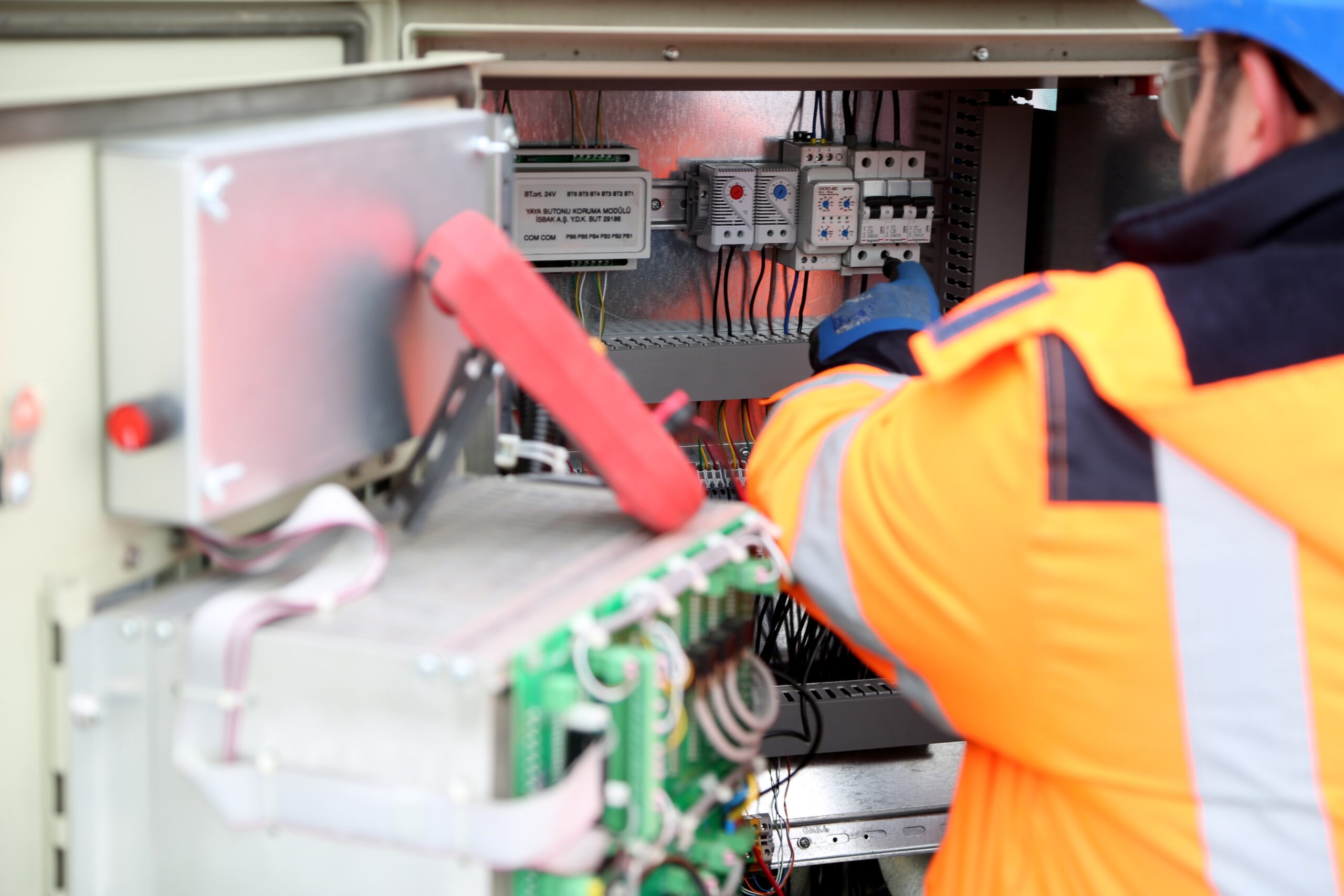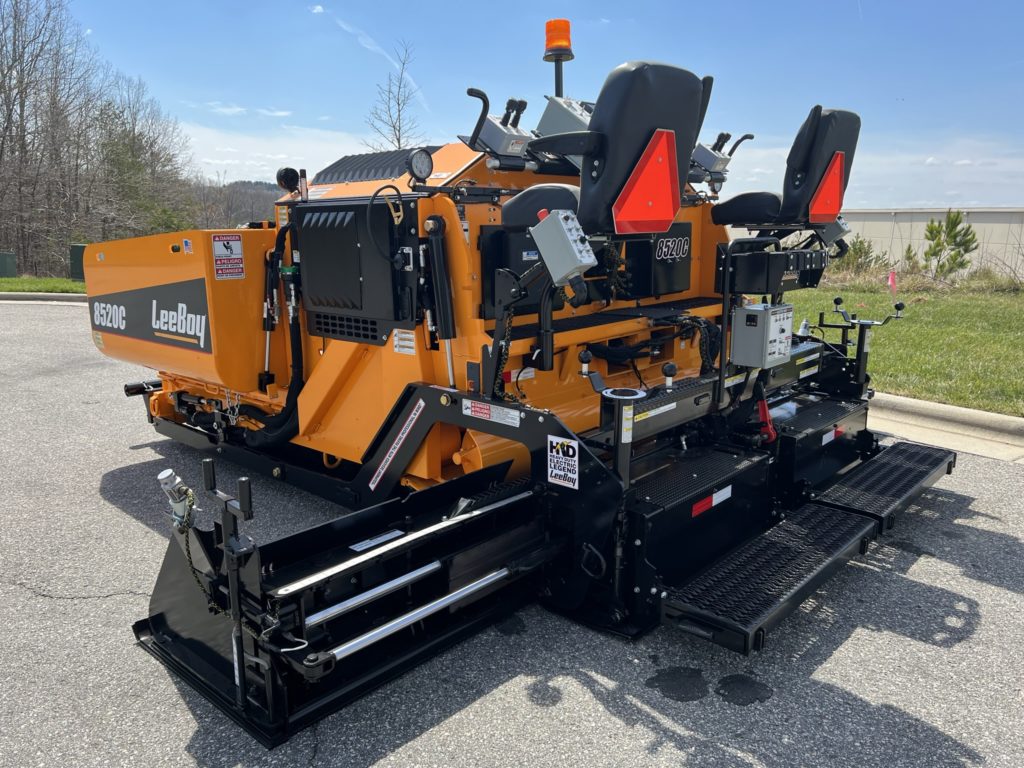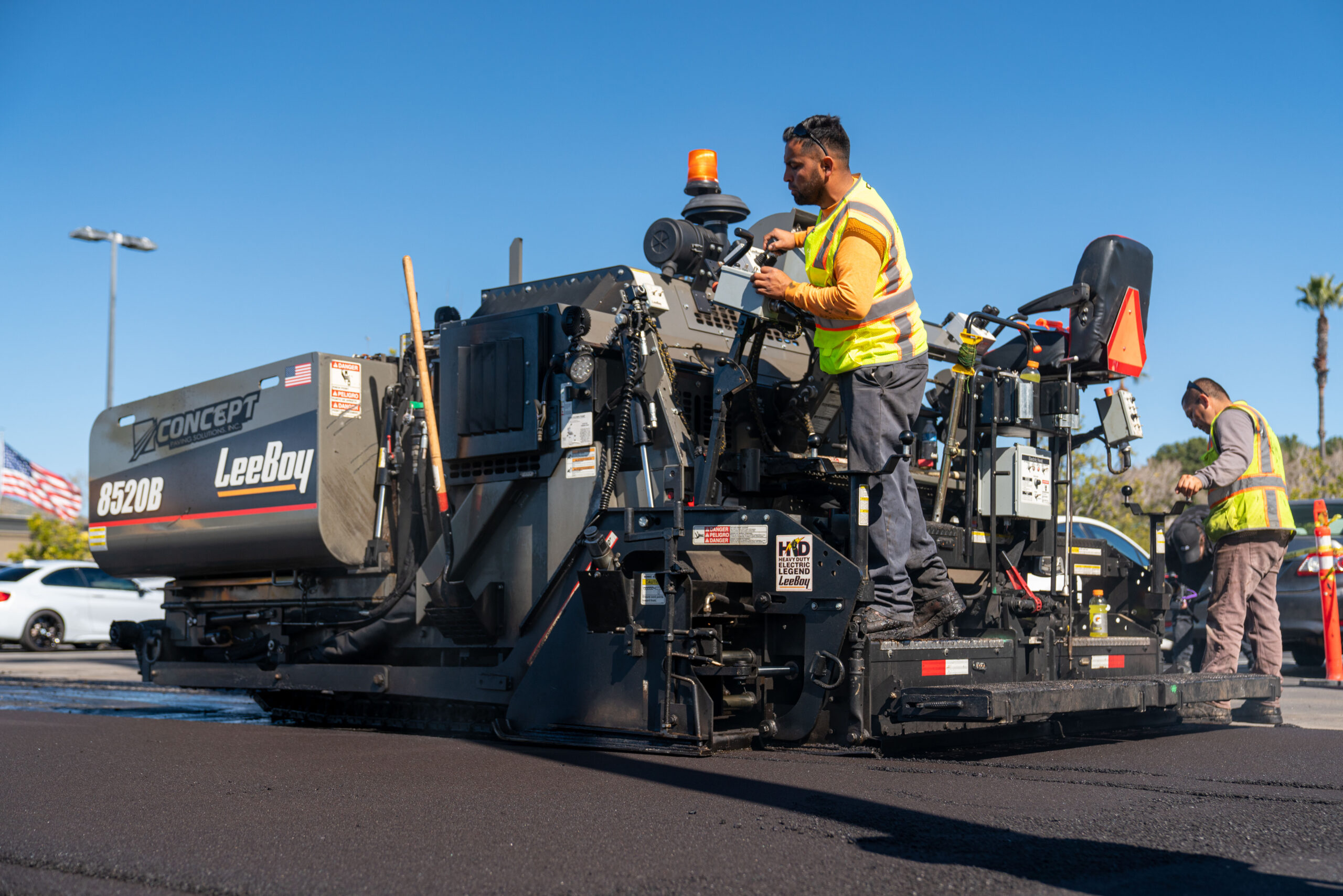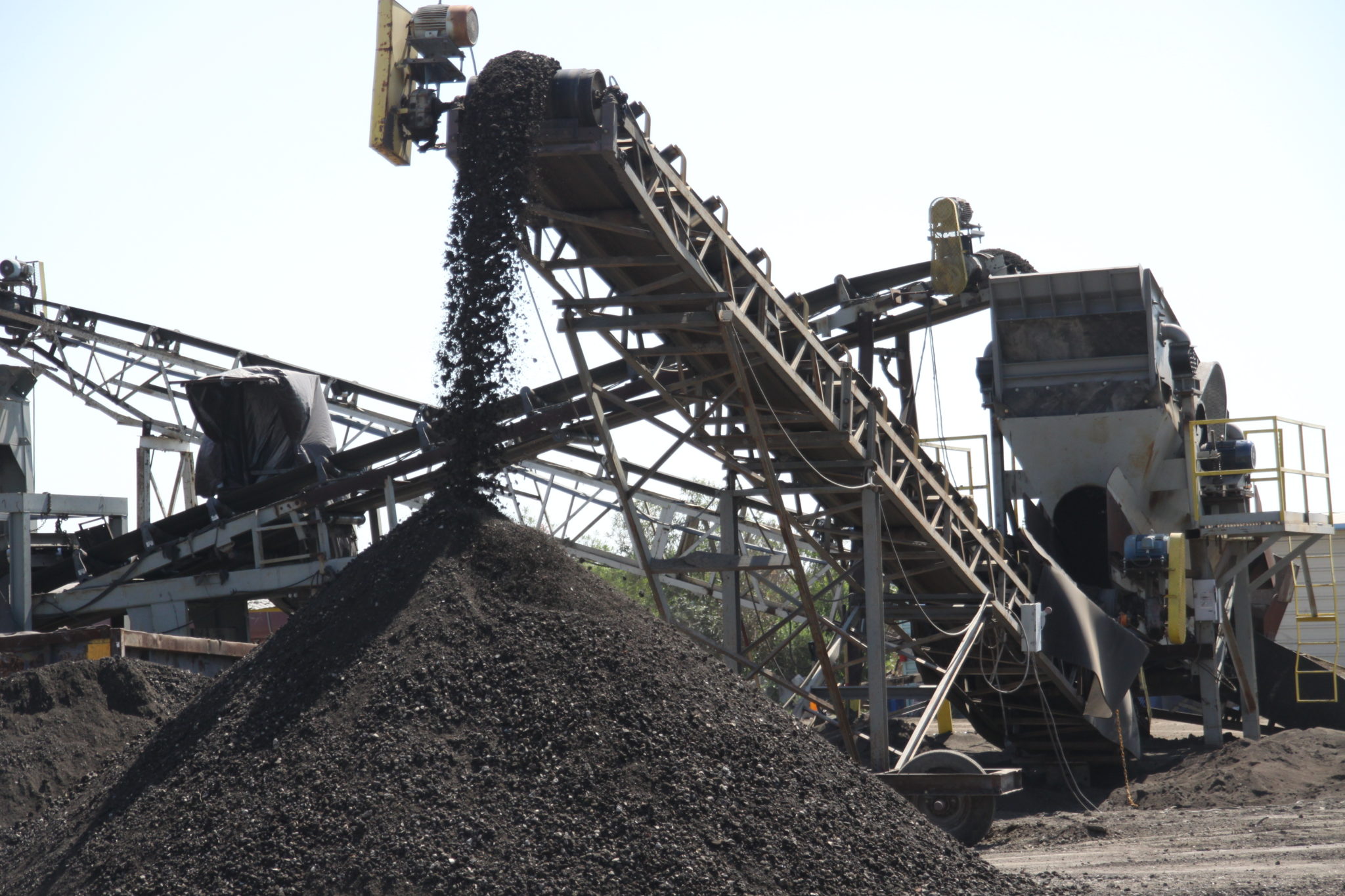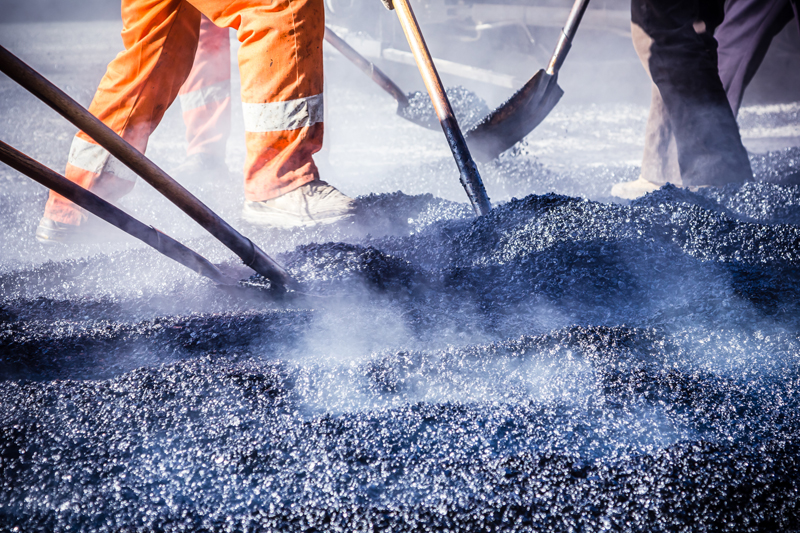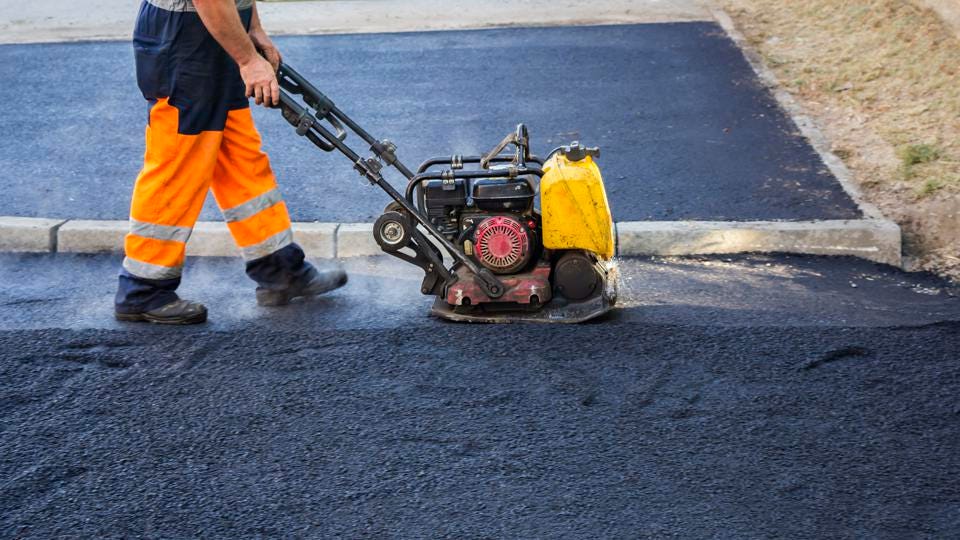Regular maintenance of asphalt pavers is crucial for ensuring their longevity and optimal performance. By routinely inspecting and servicing your equipment, you can prevent breakdowns, increase efficiency, and extend the lifespan of the paver.
Proper maintenance not only reduces the likelihood of costly repairs but also ensures that the asphalt paving process remains smooth and uninterrupted, thereby improving the quality of the finished surface.
This article aims to provide valuable tips and insights for maintaining asphalt paving equipment to achieve enhanced durability and performance. It will cover essential maintenance practices, highlight key areas that require regular attention, and offer expert advice on troubleshooting common issues.
By the end of the article, you will have a comprehensive understanding of how to properly care for your asphalt paver, ensuring it delivers reliable and efficient results paving job season after paving job season.
Understanding Asphalt Pavers
Asphalt pavers, also known as paving machines, are construction equipment used to lay asphalt on roads, bridges, parking lots, and other such infrastructures.
Their primary function is to spread and flatten the asphalt mixture evenly over a predetermined surface, preparing it for compaction by a roller. This ensures a smooth, uniform layer, which is crucial for creating durable, long-lasting surfaces that can withstand heavy traffic and adverse weather conditions.
Types of Asphalt Pavers and Their Applications
There are primarily two types of asphalt pavers: wheeled pavers and tracked pavers.
Wheeled Pavers
Equipped with pneumatic tires, wheeled pavers are highly maneuverable and are well-suited for urban environments and smaller projects where navigation through tight spaces is essential. They offer better mobility on paved surfaces and are generally faster in operation.
Tracked Pavers
These pavers have continuous tracks instead of wheels, giving them a larger surface area in contact with the ground.
This design provides enhanced stability and weight distribution, making tracked pavers ideal for large-scale projects and uneven terrain. Their superior traction allows them to handle heavy loads and maintain a consistent paving speed, ensuring a high-quality finished surface.
Each type of asphalt paver is designed to meet specific project needs, ensuring efficiency and optimal performance in a variety of paving applications.
Paving contractors need to consider different factors, such as the pavement quality, the paving mix, accounting for cold asphalt chunks, mat thickness, the pavement structure, and more.
Regular Inspection and Maintenance
To ensure the longevity and optimal performance of your asphalt paver, regular inspection and maintenance are crucial. Routine checks can help identify potential issues before they escalate into costly repairs or downtime.
Consistent maintenance not only prolongs the life of your equipment but also enhances its efficiency, ensuring smooth and high-quality paving operations.
If you want quality pavement, you need to make sure you properly maintain the equipment. The screed operator is the one responsible for providing the proper mat temperature, depth, and pattern, but much more goes into it.
Preparing for Maintenance Tasks
Before conducting any maintenance tasks, it’s essential to prepare adequately. Ensure that the paver is parked on a flat, stable surface and that all safety measures, such as wearing appropriate protective gear, are in place.
It’s also beneficial to have a checklist of maintenance tasks and the necessary tools at hand to streamline the process.
Key Components to Inspect and Maintain
Engine and Hydraulic System
Regularly check fluid levels and look for any leaks. Ensure that filters are clean and replaced as needed.
Screed
Inspect the screed for any wear or damage. Properly calibrate and adjust it to maintain consistent pavement thickness and smoothness.
Conveyor System
Examine the conveyor belts and chains for signs of wear or misalignment. Lubricate and adjust them to ensure an efficient material flow.
Augers
Look for any signs of wear or damage to the augers. Ensure they are properly adjusted to distribute asphalt evenly.
Electrical Systems
Inspect all electrical connections and components for any signs of corrosion or damage. Ensure that all lights and controls are functioning correctly.
Regular inspection and maintenance are pivotal in ensuring your asphalt paver operates at its best, delivering high-quality results and extending its service life.
Cleaning and Lubrication
Maintaining the cleanliness of your asphalt paver is crucial for its longevity and optimal performance. Different parts of the paver require specific cleaning techniques to ensure they remain in good condition.
For instance, the hopper should be cleaned daily to remove any asphalt buildup, which can be done using a pressure washer or a scraper. The screed plate and end gates should also be inspected regularly and cleaned using suitable solvents to remove any asphalt residue.
Additionally, the conveyor chains and augers should be cleared of debris to prevent blockages and ensure smooth operation.
Proper Lubrication Methods for Optimal Performance
Lubrication is essential for the smooth operation and extended life of an asphalt paver. Each moving part of the paver requires proper lubrication to minimize friction and wear. It is recommended to use high-quality lubricants that meet the specifications provided by the paver manufacturer.
Key areas that need regular lubrication include the screed plates, auger bearings, conveyor chains, and drive chains.
For optimal performance, follow a consistent lubrication schedule, ensuring each component is adequately lubricated before use. Regularly inspecting the lubricated areas for signs of wear or damage will also help in maintaining the equipment in peak condition.
Managing Wear and Tear
Properly managing wear and tear is crucial to ensure the longevity and optimal performance of your asphalt paver.
Identifying Common Signs of Wear and Tear
First and foremost, it’s essential to regularly inspect your asphalt paver for common signs of wear and tear. Look for uneven surfaces, cracks, or grooves on the screed, which can affect the quality of the pavement.
Additionally, check for loose or missing bolts, worn-out tracks, or hydraulic leaks. Any irregularities in the machine’s operation, such as strange noises or decreased efficiency, can also indicate underlying issues.
Strategies to Minimize Wear and Extend Lifespan
To minimize wear and extend the lifespan of your asphalt paver, adopting a proactive maintenance schedule is paramount. Regularly lubricate all moving parts to reduce friction and ensure smooth operation.
Clean the paver thoroughly after each use to prevent the buildup of debris, which can cause mechanical issues.
Additionally, using high-quality materials and fuel can reduce strain on the engine and other components. Properly training operators can also lead to more efficient and careful handling of the equipment, further reducing wear.
Importance of Replacing Worn Parts Promptly
Promptly replacing worn parts is vital to maintaining the machine’s overall health and performance. Delaying the replacement of damaged components can lead to more severe breakdowns and costly repairs or replacements.
It can also compromise the quality of the asphalt laid down, leading to dissatisfied clients and potential safety hazards.
Keeping an inventory of spare parts and establishing a relationship with a reliable supplier can significantly reduce downtime and ensure your asphalt paver remains in top working condition.
Operation Practice Tips
Operator Training and Qualifications
Ensuring that operators are adequately trained and qualified is crucial for the longevity and optimal performance of asphalt pavers. Proper training programs should cover both theoretical knowledge and hands-on practice.
Operators should understand the mechanics of the paver, safety protocols, and techniques for handling various paving materials. Certification programs and regular refresher courses can help maintain high standards and keep operators updated on the latest industry practices.
Techniques for Efficient and Safe Operation
Efficient and safe operation of an asphalt paver requires attention to detail and adherence to best practices. Operators should maintain consistent speeds to ensure even asphalt spreading and compaction.
Communication with the crew is essential to manage the flow of materials and avoid overfilling or spills. Regular equipment inspections and maintenance checks should be performed to identify and address potential issues before they impact performance.
Proper Handling of Different Paving Materials
Different paving materials require specific handling techniques to achieve the best results. For example, the temperature and consistency of hot mix asphalt need to be carefully managed to prevent segregation and ensure proper compaction.
Cold mix asphalt, on the other hand, may require different storage and application methods to maintain its quality. Operators should familiarize themselves with the characteristics of each material they work with and adjust their techniques accordingly to ensure a smooth, durable surface.
Preventive Measures for Common Issues
Proper maintenance and preventive measures are crucial for ensuring the longevity and optimal performance of your asphalt paver.
Addressing common issues such as material segregation, uneven paving, and cracking early on can save time and resources in the long run.
Material Segregation
Material segregation can lead to weak spots in the pavement, ultimately compromising its durability. To prevent this:
- Ensure consistent material blending in the plant to achieve a uniform mix.
- Use properly adjusted feed systems to avoid separation of aggregates.
- Regularly calibrate and maintain paving equipment to ensure smooth material flow.
Uneven Paving
Uneven paving results in poor surface quality and can lead to additional wear and tear. To avoid this:
- Regularly check the screed for proper alignment and operation.
- Maintain consistent paver speed and avoid abrupt changes.
- Use automatic grade and slope controls to achieve a uniform layer.
Cracking
Cracking can significantly decrease the lifespan of asphalt pavement. Preventive measures include:
- Applying the correct compaction techniques to ensure proper density and cohesion.
- Using suitable asphalt mix designs tailored to the specific project requirements.
- Performing routine maintenance and sealing any minor cracks as soon as they appear.
Troubleshooting Tips
For immediate problem-solving:
- Conduct regular inspections of the paver and surrounding work area.
- Have a set protocol for quick adjustments during paving operations.
- Train operators thoroughly to recognize and address issues promptly.
Implementing these preventive measures and troubleshooting tips will help extend the life of your asphalt pavement and maintain its optimal performance.
Seasonal Maintenance Considerations
Adjusting maintenance routines for different seasons is crucial to ensure the longevity and optimal performance of your asphalt paver. Different weather conditions can significantly impact the functionality and durability of your equipment.
Preparing for Winter and Adverse Weather Conditions
As winter approaches, it’s essential to prepare your asphalt paver for harsh conditions such as snow and freezing temperatures. This involves thoroughly inspecting the paver for any wear and tear, ensuring all fluids are at proper levels, and applying anti-freeze where necessary.
It’s also important to store the equipment in a sheltered area to protect it from the elements, and to clean the paver thoroughly to remove any dirt and debris that could cause damage during storage.
Preventing and Repairing Damage Caused by Extreme Temperatures
Extreme temperatures, whether high or low, can cause significant damage to your asphalt paver. In hot weather, components can overheat and fluids can evaporate, leading to increased wear and potential breakdowns.
To prevent such issues, regularly check and top up coolant levels, and ensure the paver is adequately lubricated. In cold weather, freezing conditions can lead to cracks and brittleness in materials.
Regular inspections and timely repairs are crucial to address any damage early, preventing minor issues from escalating into costly repairs. Implementing these seasonal maintenance practices can significantly extend the life of your asphalt paver and enhance its performance year-round.
Maintaining Electrical Systems
Electrical systems are the backbone of any asphalt paver, ensuring that all the components work seamlessly together.
Proper maintenance of these systems is crucial for the overall performance and longevity of the equipment.
Importance of Electrical System Maintenance
Regular maintenance of electrical systems helps prevent unexpected downtime and costly repairs. By ensuring that all electrical components are in optimal condition, you can avoid malfunctions that could disrupt the paving process. Moreover, well-maintained electrical systems improve the efficiency and safety of the asphalt paver.
Inspecting and Cleaning Electrical Components
Routine inspection and cleaning of electrical components are essential maintenance tasks. Check for any signs of wear, corrosion, or loose connections that could impede the functionality of the equipment.
Clean the components regularly to remove dust, dirt, and debris that could cause overheating or short circuits. Use appropriate cleaning agents and tools to avoid damaging the electrical parts.
Troubleshooting Electrical Problems
Even with regular maintenance, electrical issues can still arise. When they do, troubleshooting becomes a critical step. Start by identifying the source of the problem – whether it’s a faulty wire, a blown fuse, or a malfunctioning component.
Use diagnostic tools to test the electrical system and pinpoint the issue accurately. Once identified, replace or repair the faulty parts as needed to restore the system to full functionality. Keeping a record of any problems and the steps taken to resolve them can be helpful for future reference.
Getting Quality Fuel and Lubricants
The quality of fuel and lubricants used in your asphalt paver significantly affects its performance and longevity. Poor quality fuel can lead to incomplete combustion, resulting in soot deposits that clog engine parts and reduce efficiency.
Similarly, inferior lubricants may fail to provide adequate protection, causing premature wear and tear on critical components. Using high-quality fuel and lubricants ensures smoother operation, optimal performance, and extended equipment life.
Choosing the Right Fuel and Lubricants
Selecting the appropriate fuel and lubricants for your asphalt paver is crucial for maintaining its efficiency and durability.
Always refer to the manufacturer’s recommendations for the type and grade of fuel and lubricants suitable for your specific model. High-quality diesel fuel with low sulfur content is generally preferred for pavers, while lubricants with the right viscosity and additives help reduce friction and prevent corrosion.
Proper Storage and Handling of Fuel and Lubricants
Proper storage and handling of fuel and lubricants are essential to preserve their quality and effectiveness. Store fuel in clean, sealed containers to prevent contamination from dirt and moisture.
Lubricants should be kept in their original packaging or approved containers, away from direct sunlight and extreme temperatures.
Regularly inspect storage conditions and containers for any signs of leakage or deterioration. Proper handling practices, such as using clean dispensing equipment and avoiding mixing different products, will help maintain the integrity of your fuel and lubricants, ensuring your asphalt paver performs at its best.
Collaboration with Maintenance Professionals
Engaging with expert maintenance technicians is crucial for the longevity and optimal performance of your asphalt paver. These professionals bring specialized knowledge and experience, ensuring that your equipment is serviced according to industry standards.
Scheduling professional inspections and servicing at regular intervals helps identify potential issues before they escalate, minimizing downtime and unexpected costs.
Building a long-term maintenance partnership with a reliable service provider fosters trust and consistent care, ultimately extending the lifespan of your paver and enhancing its operational efficiency.
Final Thoughts
Proper maintenance is crucial for ensuring the longevity and optimal performance of asphalt pavers. Regularly inspect and clean key components, such as the screed and conveyor system, to prevent the buildup of debris and ensure smooth operation.
Lubricate moving parts frequently, and check the alignment of the auger and screed to avoid uneven paving results. It’s also essential to monitor the paver’s engine and hydraulic systems, addressing any issues promptly to prevent costly repairs.
Emphasizing the importance of regular maintenance cannot be overstated. By sticking to a consistent maintenance schedule, you not only extend the life of your asphalt paver but also enhance its reliability and efficiency. This proactive approach helps minimize downtime and reduces the risk of unexpected breakdowns, leading to cost savings and improved project timelines.
Overall, maintaining your asphalt paver in optimal condition offers significant benefits. It ensures a higher quality of pavement, reduces operating costs, and contributes to a safer working environment for your crew. Investing time and effort into regular maintenance pays off in the long run, guaranteeing that your asphalt paver consistently delivers top-notch performance.




![What Causes Alligator Cracking in Asphalt? [And How To Solve It]](https://www.leeboy.com/wp-content/uploads/2024/11/image.png)



